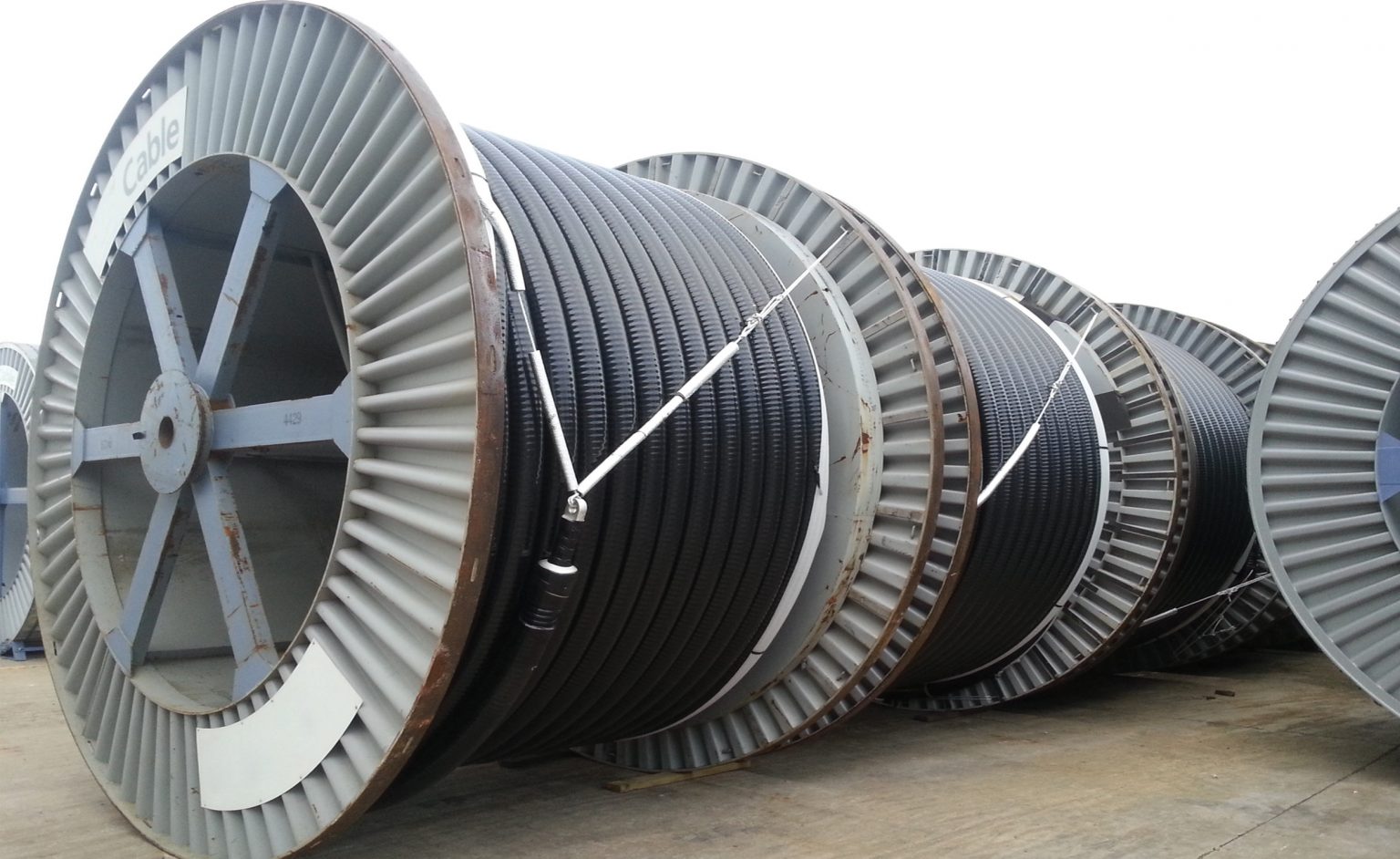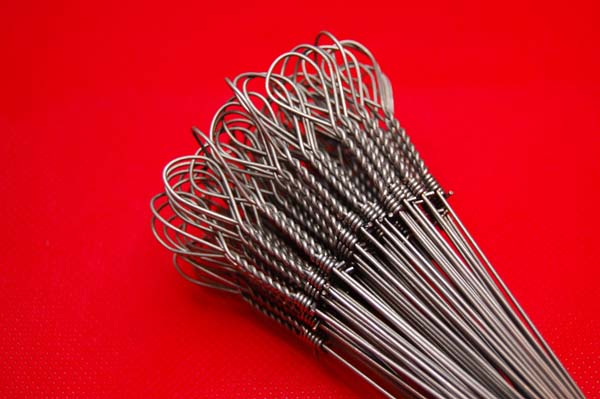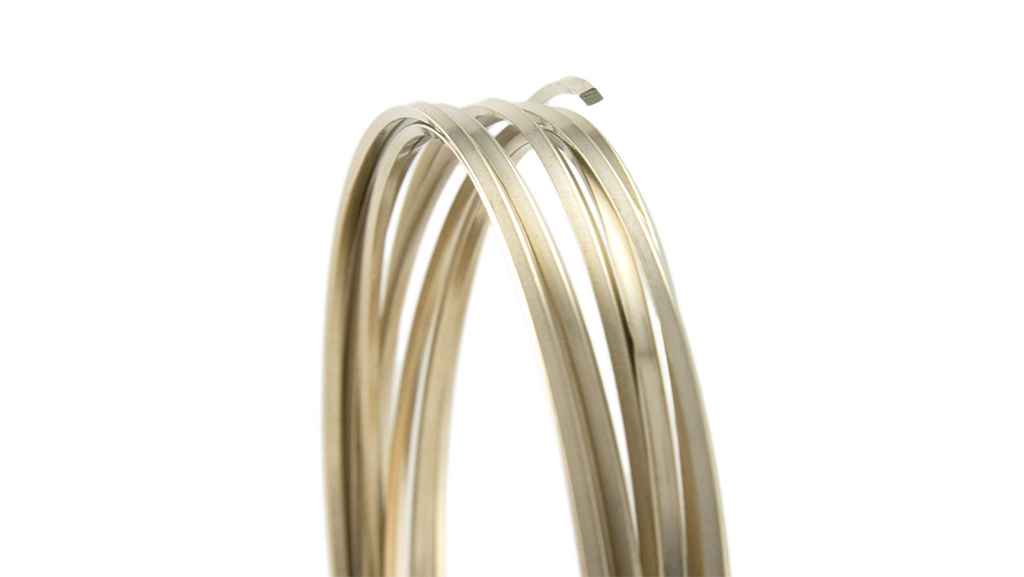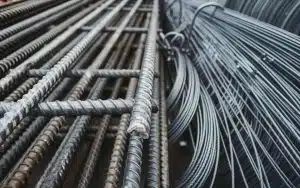Comprehensive Guide to Galvanized Wire: From Production to Applications
We welcome esteemed users to the APIT site. In this section of our articles, we address a topic of great importance to many in various industries: “Comprehensive Guide to Galvanized Wire: From Production to Applications“
Galvanized wire, due to its unique properties, is used across a wide range of applications. From reinforcing concrete and building construction to agricultural and industrial uses, galvanized wire plays a key role in enhancing durability and efficiency.
In this article, we closely examine the types of galvanized wire, their features, and the advantages and disadvantages associated with them to assist you in selecting the best option for your projects. Our goal is to provide comprehensive and practical information to help you make better-informed decisions based on your needs.
This is only a part of the article; in the next section, we delve into more technical aspects and operational tips for optimal use of these products. Join us on this educational journey to gain a deeper understanding of galvanized wire and make the best choices for your future projects.
Introduction to Galvanized Wire
Definition of Galvanized Wire
Galvanized wire is a type of steel wire coated with a layer of zinc (Zn) to protect against corrosion, produced through the galvanization process. In this process, the wire is bonded with a thin layer of zinc and a zinc-iron coating. This method increases the wire’s resistance to corrosion and rust, offering enhanced protection against environmental elements such as rain and humidity.
Galvanized wire is used as a building material in various constructions such as doors, windows, fences, security systems, and metal structures. It is also utilized in diverse industries, including automotive, construction, and maritime. The primary advantage of using galvanized wire is its high resistance to corrosion and rust due to its zinc coating, making it highly durable. Additionally, galvanized wire is favored in various constructions for its lightweight and flexibility.
The history of galvanized wire
dates back to the early 19th century, deriving its name from Italian scientist Luigi Galvani, whose work in electricity paved the way for galvanization. The first patent for the galvanization process was registered in 1836 by French chemist Stanislas Sorel. Since then, galvanization has become a standard process for protecting steel against corrosion.
Advances in industry and the need for durable, environmentally resistant structures increased the use of galvanized wire. During the world wars, the demand for durable metal equipment and structures led to the development and improvement of galvanization processes.
Today, galvanization is a global standard for protecting various steel products from corrosion. Continuous innovations and optimizations in production processes have significantly improved the quality and efficiency of galvanized wires, enabling a wide range of applications in various industries.

Galvanized Wire Production Processes: Comparing Hot-Dip and Cold Galvanizing
Hot-Dip Galvanizing Process:
Description of hot galvanizing process:
This protective method involves immersing steel wire in molten zinc after preparation steps like cleaning and acid washing to remove impurities. The molten zinc, typically at around 450°C, reacts with the wire to form a protective alloy layer of zinc and steel. After removal from the zinc bath, the wire cools, and the zinc layer hardens.
Advantages of hot-dip galvanizing:
- Longest useful life against corrosion.
- Uniform, continuous coating, even on corners and hard-to-reach areas.
- Cathodic protection ensures steel protection even if the coating is damaged.
- Reduced maintenance and repair needs.
Disadvantages of hot-dip galvanizing:
- Relatively higher initial costs compared to other methods.
- Size and weight of parts limited by the capacity of the molten zinc bath.
- Difficulty in re-coating large parts.
Cold Galvanizing (Electro-Galvanizing) Process:
Electro-galvanizing, an electrochemical method, applies a zinc coating where the wire acts as the cathode and zinc as the anode within an electrolyte solution. Electric current transfers zinc ions from the anode to the cathode surface, enabling precise control over the zinc layer thickness in a controlled environment for a smooth, uniform finish.
Advantages of Cold Galvanizing:
- Precise control over coating thickness.
- Smooth, even final surface suitable for high precision parts.
- Lower initial costs compared to hot-dip galvanizing.
Disadvantages of Cold Galvanizing:
- Thinner coating potentially offers less corrosion resistance.
- Less cathodic protection compared to hot-dip galvanizing.
- Electricity requirement for the process may increase long-term costs.
- Size and shape limitations due to electrolyte bath dimensions.
Surface Preparation:
Essential before both galvanizing processes to ensure zinc coating adherence, involving acid washing to remove impurities and fluxing to prevent surface oxidation.
Post-Treatment:
After galvanizing, wires may undergo heat treatment to enhance physical properties or additional plating for increased corrosion resistance.
Both galvanizing methods aim to extend wire lifespan in outdoor and industrial settings, with method selection based on the end-use requirements, coating thickness needs, and economic aspects.
Comparison of Hot-Dip Galvanizing and Cold Galvanizing Methods:
- Corrosion Resistance: Hot-dip galvanizing offers higher resistance due to its thicker coating.
- Coating Uniformity: Electro-galvanizing allows for more precise coatings.
- Design Flexibility: Hot-dip galvanizing has size limitations for parts, while electro-galvanizing offers greater flexibility.
- Initial and Maintenance Costs: Hot-dip galvanizing typically has higher initial costs but proves more cost-effective long-term due to reduced maintenance needs.
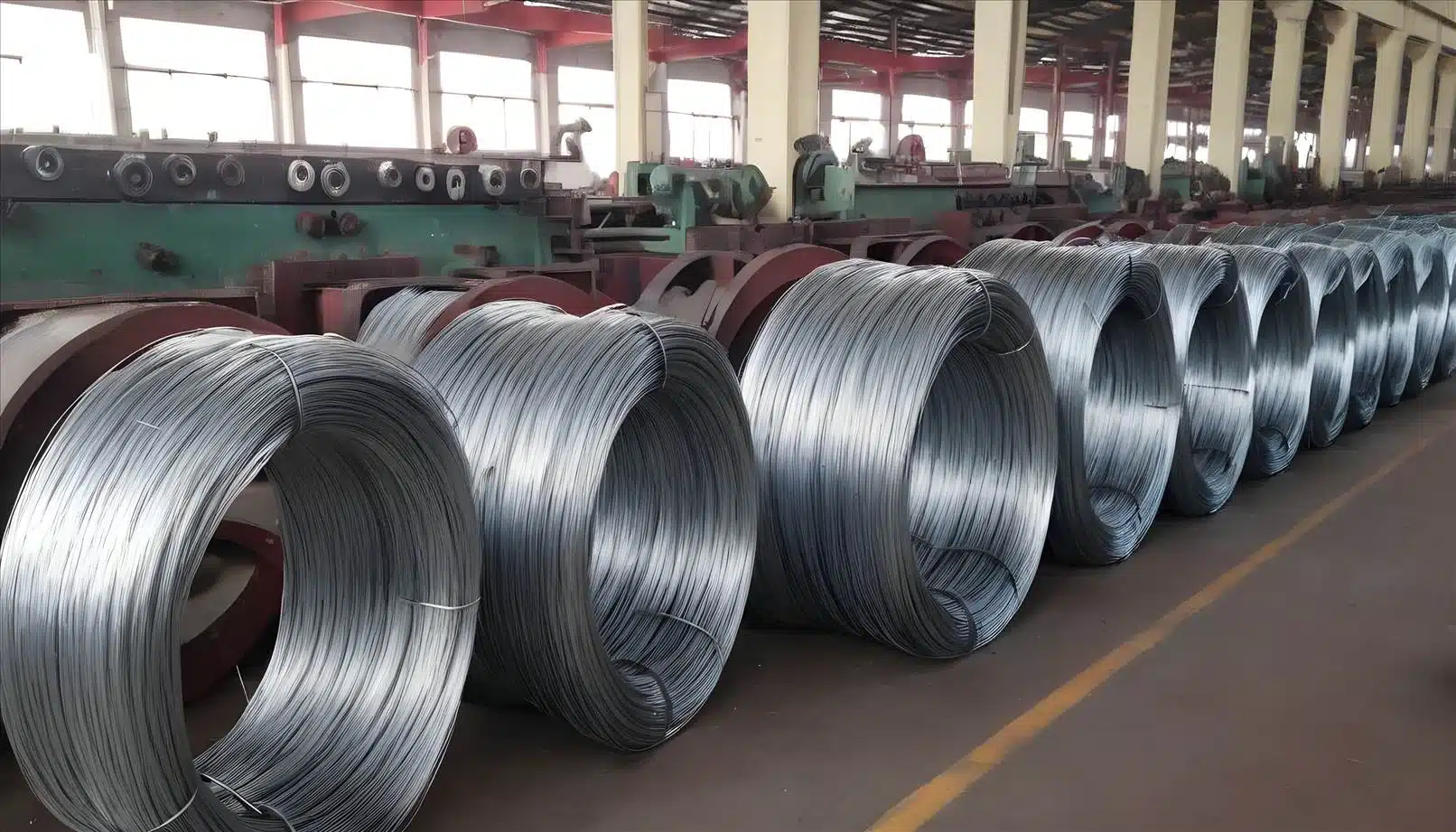
Various Models of Galvanized Wire:
Galvanized wire, valued for its high corrosion resistance and longevity, is used in industries such as construction, agriculture, electrical product manufacturing, telecommunications, and also for household and decorative purposes. Galvanization, the process of applying a zinc coating to steel for protection against corrosion, leads to the production of galvanized wire in various models and types, each with unique features and applications. This includes Heavy Galvanized Wire for high corrosion resistance needs, Light Galvanized Wire for less corrosive environments, Alloy Coated Galvanized Wire for superior corrosion resistance in highly corrosive environments, Pre-Alloyed Galvanized Wire coated with zinc-aluminum alloy before galvanization, and Electro Galvanized Wire for applications requiring a smooth and uniform appearance.
Heavy Galvanized Wire:
This wire type, with a thick zinc coating, is suitable for applications requiring high corrosion resistance. It is commonly used in agricultural fencing, animal protection networks, and industrial sectors facing harsh environmental conditions.
Light Galvanized Wire:
Covered with a thinner zinc layer, this wire is utilized mainly for indoor applications or in environments with less corrosion. It is ideal for making smaller products like shelving, toys, and decorations.
Alloy Coated Galvanized Wire:
This wire includes a mix of zinc and aluminum coatings, offering enhanced corrosion resistance. It is suitable for highly corrosive environments such as coastal areas or chemical industries.
Pre-Alloyed Galvanized Wire:
Steel wire is coated with a zinc-aluminum alloy before galvanization, providing very high corrosion resistance. This type is appropriate for use in severe environmental conditions.
Electro Galvanized Wire:
Produced through the electro-galvanizing process, this wire features a thin, uniform zinc layer. It is ideal for applications requiring a beautiful and consistent appearance, such as household and decorative uses.
Special Coated Galvanized Wire:
Includes wires coated with special materials like vinyl, polymer, or plastic to offer enhanced resistance, aesthetics, and performance in specific environments.
Each galvanized wire model is designed for specific applications to meet the diverse needs of industries and consumers. The choice of the appropriate model depends on environmental conditions, usage type, and other relevant factors.

Industrial Standards for Galvanized Wire:
Industry standards for galvanized wire are a set of regulations and technical specifications established to ensure quality, corrosion resistance, zinc coating thickness, and other important characteristics of galvanized wire. These standards help manufacturers produce quality, reliable products and assure consumers that the product they purchase meets the necessary requirements for their intended use.
International Standards for Galvanized Wire
International standards are designed in a way that facilitates trade and technical cooperation between different countries. Some of the most important international standards for galvanized wire include:
• ASTM A641/A641M: This American standard defines the technical specifications for cold and hot carbon galvanized wire.
• ASTM A653/A653M: Determines the specifications for galvanized steel sheets and strips, which may also include wire.
• ISO 1461: This international standard defines the specifications for hot galvanized coatings on steels and includes requirements for the thickness and quality of the coating.
• EN 10244-2: A European standard that specifies the zinc coating specifications for hot galvanized steel wires.
National Standards for Galvanized Wire
Different countries may define their own national standards for galvanized wire, designed to be suitable for their specific needs and conditions. Some of these standards are:
• BS EN 10244-2 in the UK: Which, like the European standard EN 10244-2, determines the zinc coating specifications for galvanized steel wires.
• JIS G 3547 in Japan: Specifies the galvanized steel wire specifications for general uses.
• GB/T 343 in China: The Chinese national standard for galvanized steel wire with zinc coating.
In Iran, standards related to galvanized wire are developed and supervised by the Iranian National Standards Organization. These standards are designed with the aim of ensuring the quality and safety of manufactured products, especially in key industries such as construction, agriculture, and the production of electrical products. Iranian standards are usually created based on international standards and considering the country’s specific climatic and industrial conditions.
The most important Iranian standards for galvanized wire include:
• National Iranian Standard ISIRI (Institute of Standards and Industrial Research of Iran): The Iranian National Standards Organization (ISIRI) has published various numbers for standards related to galvanized wire, which determine technical details such as the thickness of the zinc coating, testing methods, and quality criteria.
• ISIRI 3574: This standard defines the technical specifications and quality requirements for hot galvanized wires. It includes requirements for the thickness of the zinc coating and testing methods to determine corrosion resistance.
Alignment with International Standards:
• Iranian standards for galvanized wire are often aligned with international standards such as ASTM, ISO, and EN to facilitate international trade and ensure that products manufactured in Iran are competitive in global markets.
The Role of the Iranian National Standards Organization:
• The Iranian National Standards Organization is not only active in developing technical standards but also plays a role in monitoring the implementation of these standards in factories and production units within the country. This includes periodic inspections and tests to ensure that the manufactured products comply with national and international standards.
Importance of National Standards:
• Adherence to national standards for galvanized wire not only ensures the quality and safety of products but also helps to strengthen consumer confidence and increase the competitiveness of manufacturers in both domestic and international markets.
Iranian national standards for galvanized wire are continuously updated to keep pace with technical advancements and changes in the market and industry needs.
National and international standards are continuously updated to keep pace with technological advancements and changing market needs. Manufacturers and consumers must ensure that the products they purchase or produce comply with the latest relevant standards to guarantee the expected quality and performance.
Additional resources for further study:
To study more reliable sources for “Comprehensive Guide to Galvanized Wire: From Production to Applications,” you can use scientific journals, technical articles, specialized books, and international standards. Below is a list of resources along with relevant links:
- American Galvanizers Association (AGA) –This website provides comprehensive information about galvanization and galvanized wire
- website : https://galvanizeit.org
- ASTM International – It includes relevant standards for galvanization processes and technical specifications for galvanized wires.
- website: https://www.astm.org
- The Galvanizers Association of Australia (GAA) – This website offers educational and technical resources on galvanization in Australia.
- website : https://www.gaa.com.au


